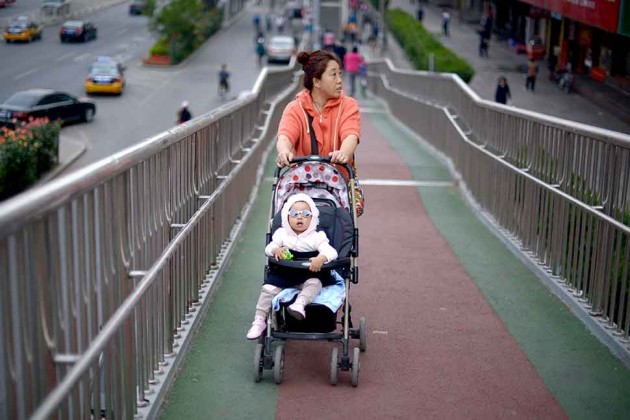Bloomberg Businessweek reports on various studies showing that China’s skewed gender ratio, a combined product of the traditional favoring of male babies and the one-child policy, is becoming more balanced as education rates rise and more people move away from agrarian lifestyles:
China’s preference for male babies appears finally to have peaked. Official statistics show that for each of the past five years, China’s skewed gender ratio has narrowed; last year, 117.6 boys were born for every 100 girls nationwide. China is at “an inflection point on gender imbalance,” says Cai Yong, a demographer at the University of North Carolina at Chapel Hill. He believes that government statistics undercount girls, because parents may not register daughters (especially if they were illegally born second or third children) and estimates the true ratio is closer to 115. “Ten years from now it will probably be about 110,” he says.
[…] Researchers at Zhejiang University and University College London recently interviewed 212 men and women, ages 18 to 39, in both urban and rural areas of three Chinese provinces. The young respondents expressed very different attitudes from their parents. “Son preference isn’t common like it was before, and I think the sex [of the child] doesn’t matter,” said a 21-year-old woman in rural Zhejiang. As the researchers wrote in a 2013 paper in the Indian Journal of Gender Studies: “Evidence that son preference is weakening was a consistent finding across all the areas we explored. Many interviewees talked about how son preference was common in their parents’ generation but weak among their own peers.”
Urbanization and higher levels of education are blunting old attitudes. “When young people are more educated, they can push back more easily against tradition—especially against parental and grandparental expectations,” says Cai. “I grew up in a rural part of China, where everyone said you needed to have at least one son; in the old days people often said, ‘The more sons, the better.’ ” According to his research, in 2000 the majority of Chinese women of childbearing age had only middle school or lower education; by 2020, he projects that a quarter to a third of Chinese women will have attended college. Meanwhile, China’s massive program of urbanization continues; in 2011, for the first time, more than half the population was urban—the government estimates that by 2030, 70 percent will live in cities. […] [Source]
Read more about gender imbalance, urbanization, the one-child policy, and education in China, via CDT.







